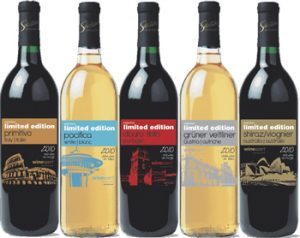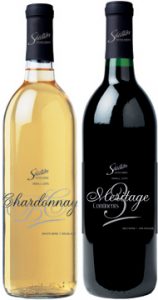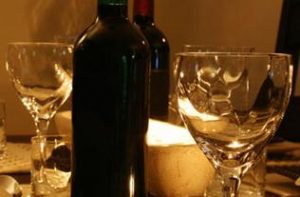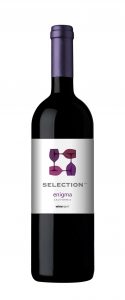So you didn’t make it to the wine tasting and now you’re wondering how you’re supposed to know which of the Limited Editions you might like. Or maybe you did attend but still can’t decide. For full descriptions of each wine you can visit our Limited Edition Wine Page. We’ve also compiled some quick points about each wine below along with the commercial equivalent wine that we offered at the Wine Tasting in case you want to go out and try them for yourself. Just remember, our wines will be better!
January: Australian Shiraz/Viognier (Heaviest Body)
- This is a full-bodied red wine, and the heaviest of the three reds, even though it is a blend of a white grape (Viognier) with a red grape (Shiraz). 90% Shiraz, 10% Viognier.
- The grapes come from the Salmon Gum Vineyards in the Riverland District, which is part of the Murray Darling Basin. There’s plenty of sunshine and heat in the Riverland which is perfect to ripen up the Shiraz, mixed with ample irrigation to control the rate of ripening
- Viognier is an especially aromatic wine and the idea of blending it with Shiraz is to provide some soft aromatics to the heavy, tannic character of Shiraz
- Distinguishing feature of Shiraz is the small berries with a thick skin. Most of the colour, flavour, aroma and tannin in red wine comes from the skin. Small berries = high skin to pulp ratio, so lots of big, robust fruit flavours. Thick skin = lots of tannin
- There will be cross-over between the red and the white flavours. Shiraz will give chewy blackberry and chocolate notes with lots of tannin, but this will be balanced slightly by delicate perfume notes provided by Viognier.
Commerical Equivalent: Gemtree Bloodstone Shiraz Viognier – SKU # 775015 at BCLD – $18.99
January: Pacifica White (Off–Dry)
- Like last year’s Pacific Quartet, the Pacifica White also contains four different grape varietals from growing regions located on the Pacific Rim:
– Sauvignon Blanc ~ California
– Viognier ~ California
– Chardonnay ~ Okanagan, BC
– Semillon ~ Australia - It is not a traditional blend and each grape has been chosen for the balance that it provides to the others. This wine will have layers of flavour. Sauvignon Blanc is grassy and herbaceous. Viognier brings stone fruits and is very aromatic. Semillon provides a honey note. Chardonnay presents as crisp green apple.
- It will appeal to lovers of slightly sweet wines (Gewurztraminer, Piesporter, Liebfraumilch), but off-dry does not mean that it is sweet. Off-dry means there is a perfect balance between the acid and fruit notes. In the case of the Pacifica White it means that it is luscious and juicy with a big mouth feel.
- Has four completely different grapes than the Pacific Quartet so the wine will have different flavours; however, the Pacifica White is a very similar style with the off-dry note and luscious fruit.
Commercial Equivalent: Sokol Blosser Evolution, Oregon, US – SKU # 616938 at BCLD – $20.99
February: Italian Primitivo (Medium Body)
- Primitivo was previously thought to be the same grape as the more widely known Zinfandel. It was recently discovered that they share the same grape parent so they are very close genetically.
- The Primitivo juice comes from the Puglia growing region which is the heel on the boot-like map of Italy. It’s very hot in Puglia but the region receives a cooling effect from the Mediterranean which prevents the grapes from ripening to quickly.
- An important characteristic of Primitivo is that they are very small grapes with a thin skin. This provides a high skin to pulp ratio, which means that you get big colour, flavour and aroma in Primitivo. The thin skin, however, means you have more delicate tannin than thicker skinned grapes.
- The dominant flavour of Primitivo is ripe raspberries. As it ages you will get plums and spice. The tannin starts firm but softens with age to become silky smooth.
Commercial Equivalent: Salento Primitivo – SKU # 672444 at BCLD – $12.94
March: Austrian Grüner Veltliner (Dry)
- Grüner Veltliner is the most widely planted grape in Austria, accounting for 37% of all vine plantings in the country.
- Until the mid 80’s, Grüner Veltliner was produced for quantity rather than quality. The past few decades have seen a significant rise in quality (premium growing techniques) and a rise of Grüner Veltliner on the world stage.
- Wine geeks have known of this amazing wine for some time and it is now gaining popularity on trendy restaurant wine lists across Canada (Toronto, Montreal, Vancouver, Victoria). Incredible with shellfish and seafood.
- Grüner Veltliner is crisp and minerally with nice fruit flavours, similar in character to dry Riesling (particularly Okanagan), without the floral note usually associated with Riesling. Grüner Veltliner also draws comparisons with Sauvignon Blanc and Pinot Grigio or Pinot Gris.
- It will drink well young (if a little simple), but will age better than almost all other white wine. Ours will need age to bring out the complexity of flavours.
Commercial Equivalent: Grooner Gruner Veltliner – SKU # 326231 at BCLD – $16.99
April: Portuguese Douro Tinto (Full Body)
- The Douro Valley is the famous growing region that the juice comes from in Portugal and Tinto means “red” in Portuguese. So this wine is our “Douro Red” blend.
- Portugal, particularly the Douro Valley region, is famous for producing port but many of the grapes that go into the premium ports also make remarkable fine dry red table wines which the Portuguese have been enjoying for centuries.
- Douro Tinto is a blend of three red grapes: Touriga Nacionale, Tinta Roriz & Touriga Franca.
- Touriga Nacionale – Considered the Douro region’s finest red grape. Tiny berries that produce a big, dark robust wine.
- Tinta Roriz – More commonly referred to as Tempranillo, which is the famous grape that makes up Rioja (Spain).
- Touriga Franca – is Cabernet Franc to Touriga Nacionale’s Cabernet Sauvignon. That is to say, if we look at this Douro blend in the terms of a classic Bourdeaux style blend, Touriga Nacionale provides lots of deep flavour & tannin, while Touriga Franca provides freshness and subtlety.
- Young, this wine will show a lush blackcurrant flavour from the Nacionale, and violets/roses. With age the floral character will become more prominent.
Commercial Equivalent: Douro Red Quinta Do Crasto – SKU # 499764 at BCLD – $19.98
Note – lightest to heaviest in the reds would be in the order of 1.Primitivo 2.Douro Tinto 3.Shiraz/Viognier. Though, Primitivo is still medium bodied, whereas Douro Tinto and Shiraz/Viognier are both full bodied.

















